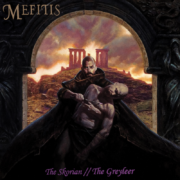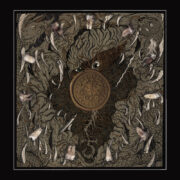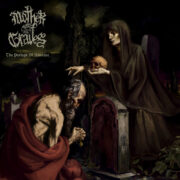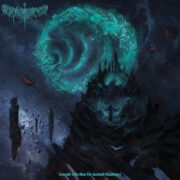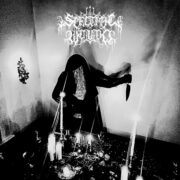Free Goat Of Leviticus
Taken from the upcoming WOLD album “Freermasonry”
1- Early on a God of conditions alienates his people through the priests of Leviticus.
A Jewish Testament metaphor that could convey a form of priestly alienation is the scapegoat from the Day of Atonement in Leviticus:
and Aaron shall lay both his hands upon the head of the live goat, and confess over him all the iniquities of the children of Israel, and all their transgressions in all their sins, putting them upon the head of the goat, and shall send him away by the hand of a fit man into the wilderness/: And the goat shall bear upon him all their iniquities unto a land not inhabited: and he shall let the goat in the wilderness. (16:21-22)
The second goat, instead of being sacrificed and used up like the first by the priestly nation, was set free into a realm away from God.
The goat is left to be the hated outsider, free but alone.
The second goat of Leviticus could be seen as a metaphor for the collective hatred against those who do not bow down to priestly faith.
The metaphor could be read as the potential in each individual for freedom, which must be driven off by the priest and so deprived of possible impact on the herd.
The goat is provided liberation but only through the priestly collective’s alienating totalitarianism.
The goat could be viewed as the spirit of resistance against priestly ideology and abuse.
2- Matthew continues the segregation of the free-goat; it is written:
and he shall separate them one from another, as a Shepard divideth his sheep from the goats/: And he shall set the sheep on his right hand, but the goats on the left. (25:32-33)
And in John:
my sheep hear my voice, and I know them, and they follow me. (10:27)
and the wolf catcheth them, and scattereth the sheep. (10:12)
The goats on the left hand path are segregated from the herd due to their potentialities for freedom from priests and theism.
Sheep are gentle there is not any wild left in them.
It is metaphor of domestication that allows for willing sacrifice.
Sheep are easy victims.
Passivity and subservience are heavily promoted by the masters of the bible.
3- In his First Epistle General Peter promotes the Christian virtues of submissive behaviour:
be subject to your masters with all fear; not only to the good and gentle, but also to the forward/. For this is thankworthy, if a man for conscience toward God endure grief, suffering wrongfully/. (2:18-19)
Peter epitomizes the sadomasochistic spirit of the New Covenant.
4- The wolf and the second goat represent the hidden “demonic” path of free thought and the opportunity for a type of freedom from religious neurosis.
The wolf in John denotes the potentiality of each individual.
Jesus guards his flock from own-thinking wolves.
The own-thinking wolves scatter the flock; they threaten precisely the herd-like uniformity of the sheep.


